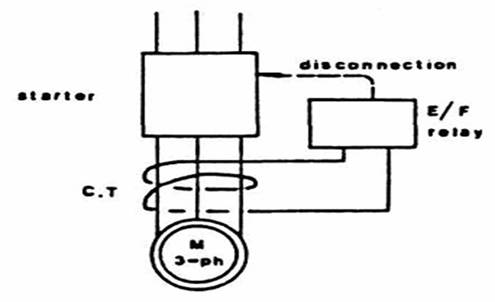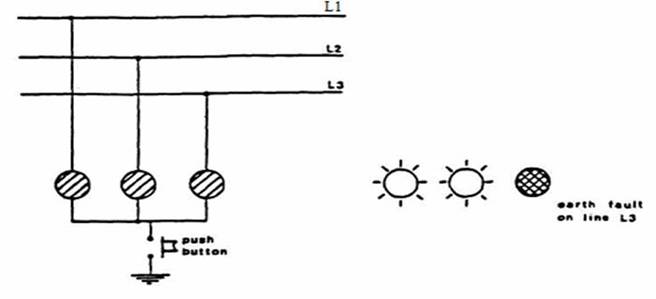Question
With reference to high voltage
electrical distribution system
Sketch and describe a panel mounted
earth fault monitor
Explain how HV system may be
earthed.

The current transformer (CT)
measures the phasor sum of the 3 line currents supplied to the motor. If the
motor is healthy (no earth faults) the phasor sum of the currents measured by
the CT is zero.
If an earth fault occurs in the
motor, an earth fault current flows and the phasor sum of the currents is now
not zero. The current now monitored by the E/F relay is used to trip the
contactor in the starter to isolate the faulty motor circuit.
High voltage systems (3.3 kV and
above) on board ship are normally ‘earthed’. Such systems are normally earthed
via resistor connecting the generator neutrals to earth as shown below.

The ohmic value of each earthing
resistor is usually chosen so as to limit the maximum earth fault current to
not more than the generator full load current. Such a Neutral Earthing Resistor
(NER) is often assembled with metallic plates in air but liquid (brine)
resistors have also been used. The use of such an earthed system means that a
single earth fault will cause that circuit to be disconnected by its protection
device.

Earth indication lamps are arranged
as shown above. If the system is healthy (no earth faults) then the lamps glow
with equal half brilliance. If an earth fault occurs on one line, the lamp
connected in that the line is dim or extinguished and the other lamps glow
brighter.